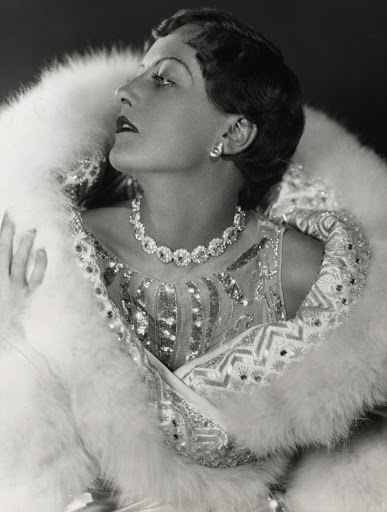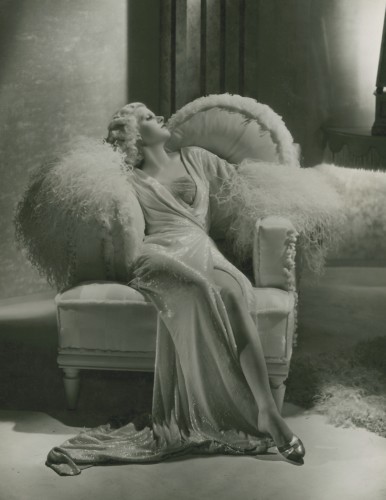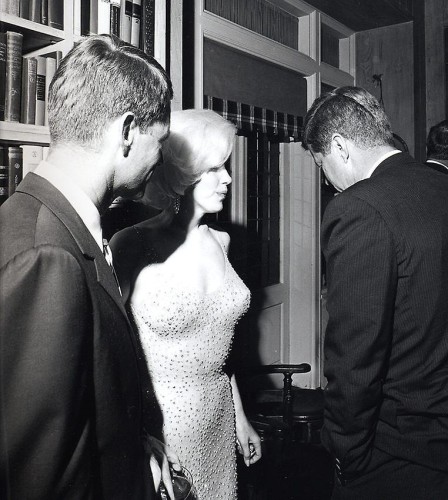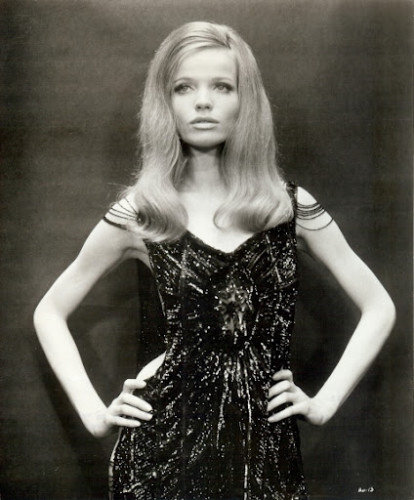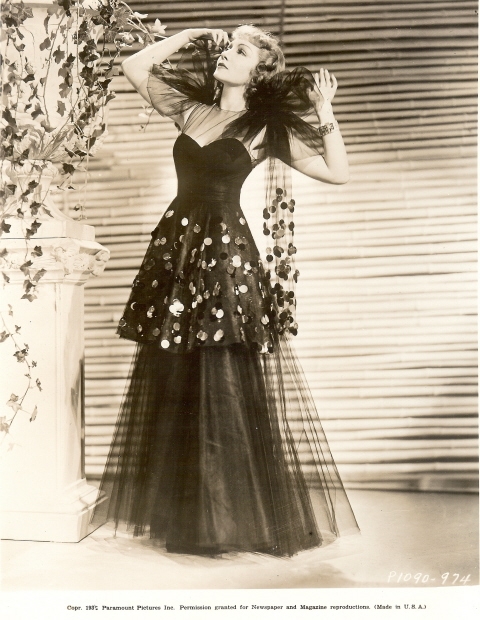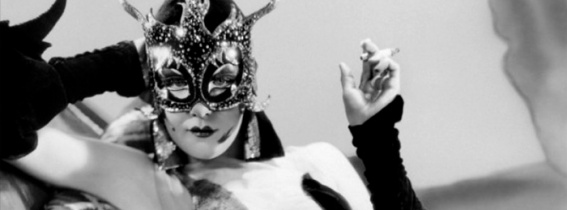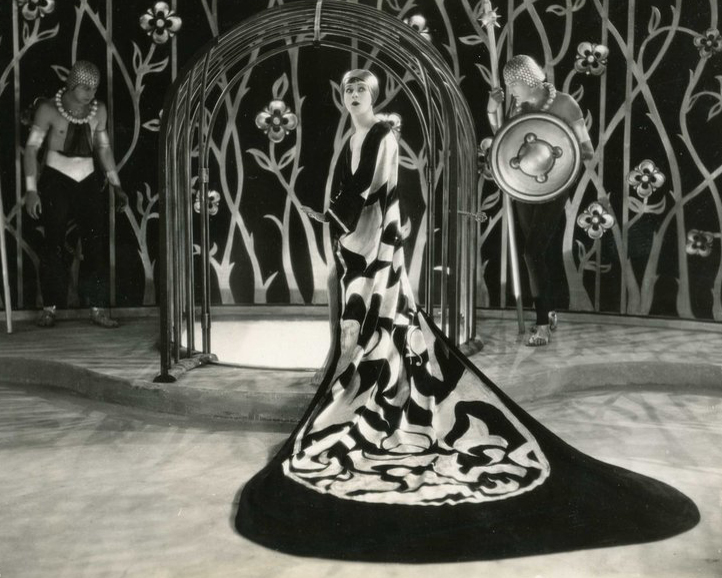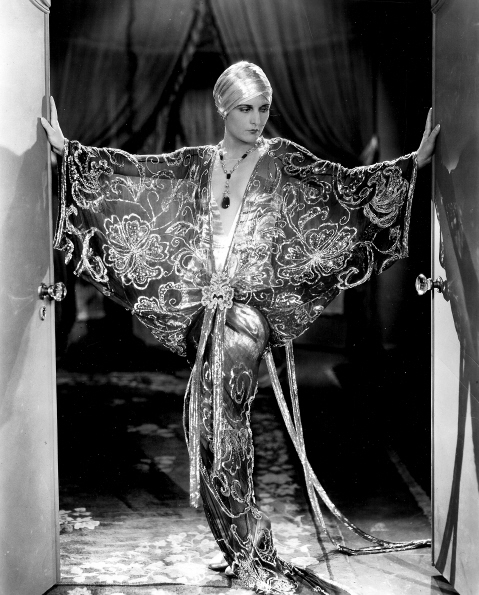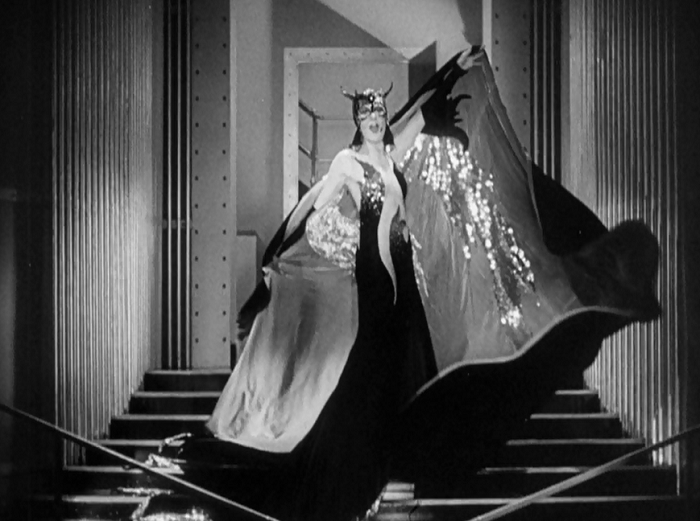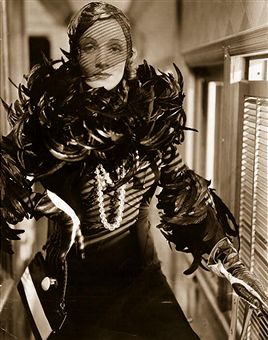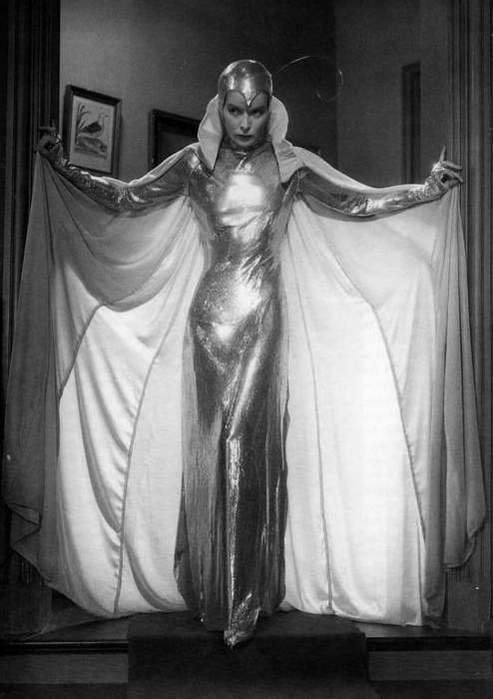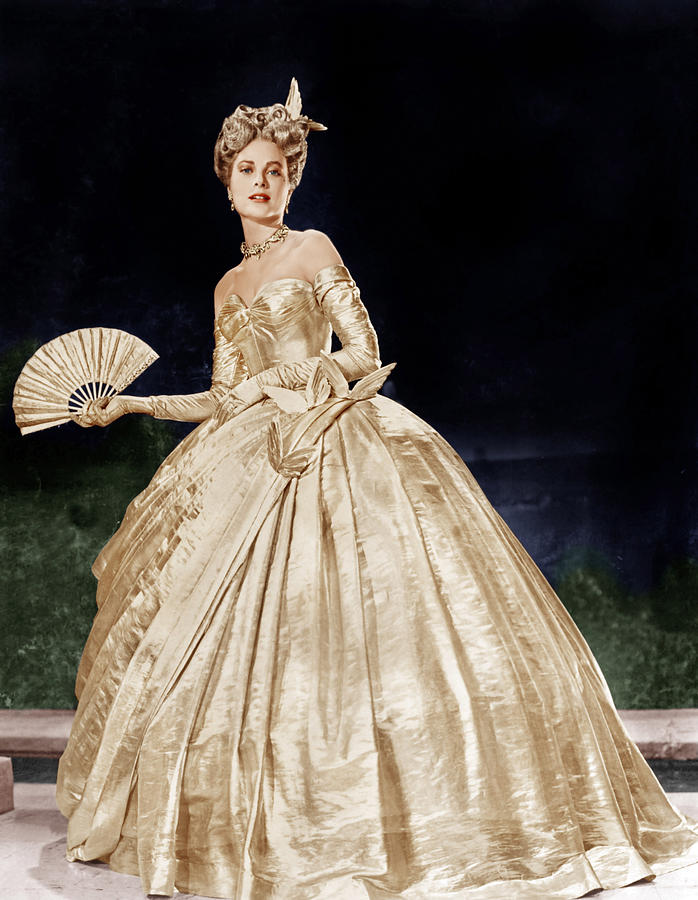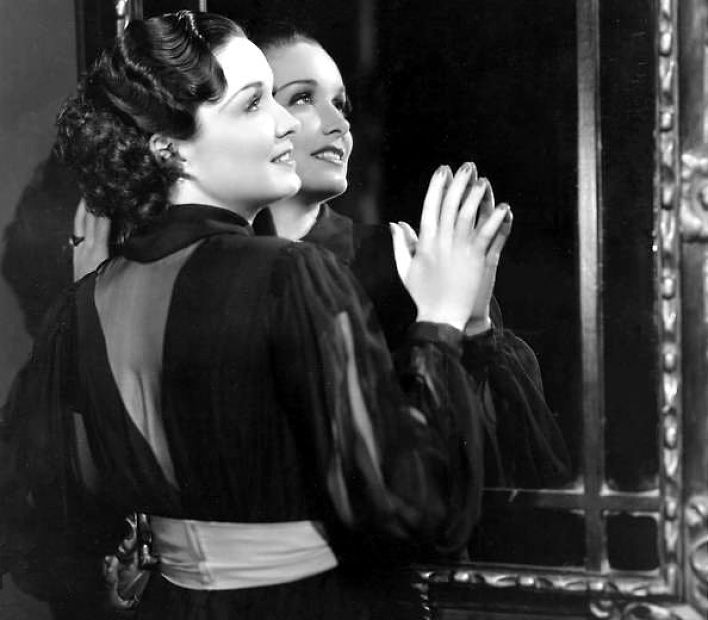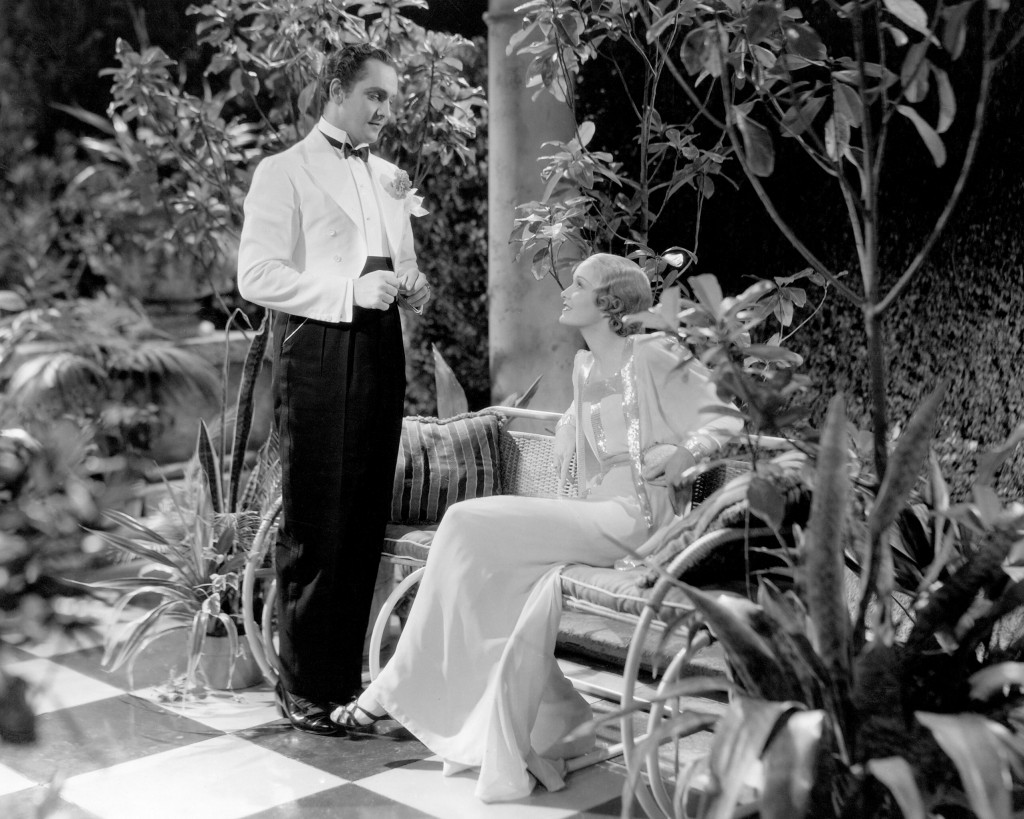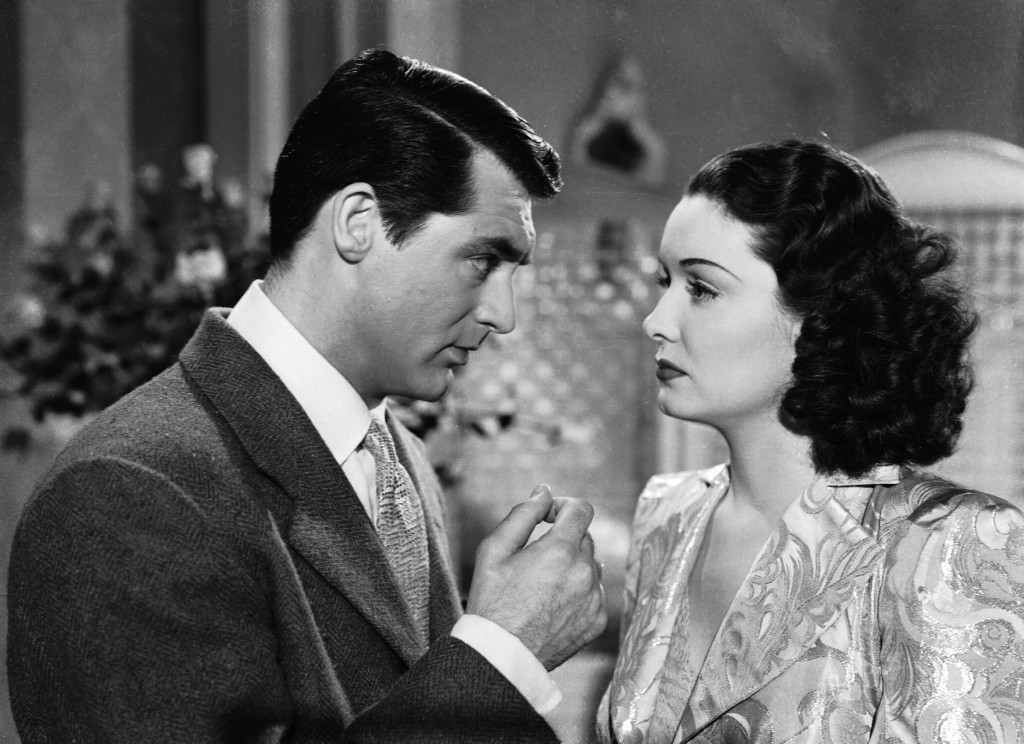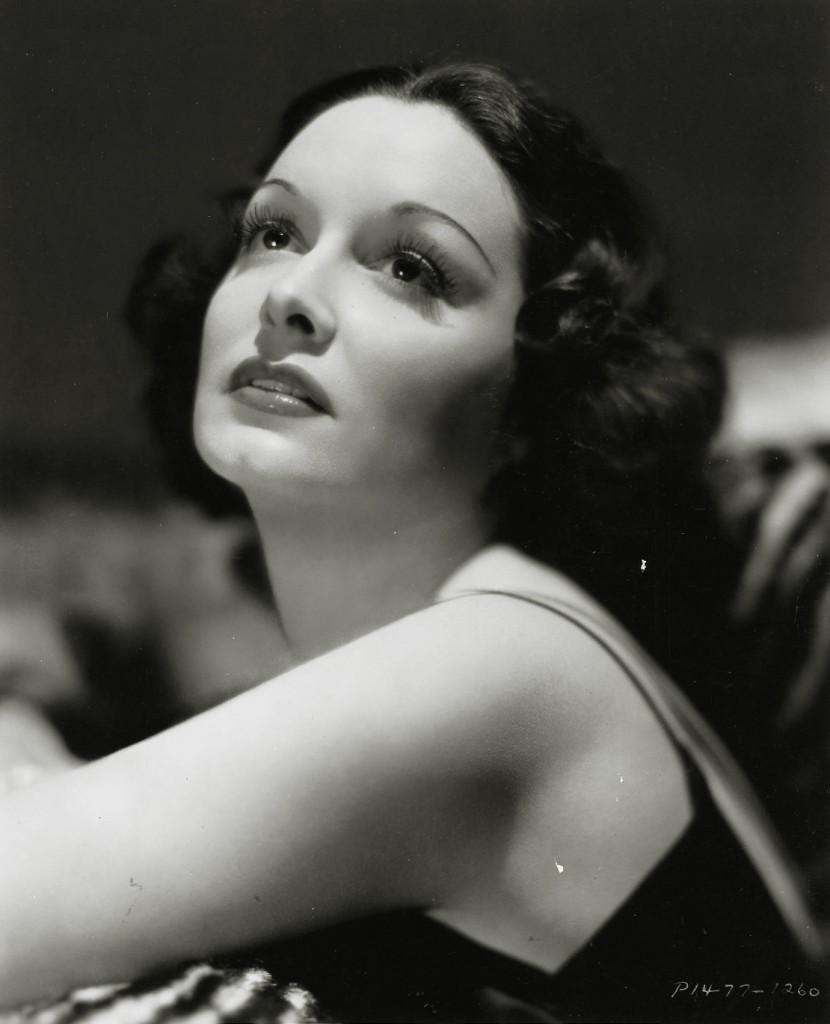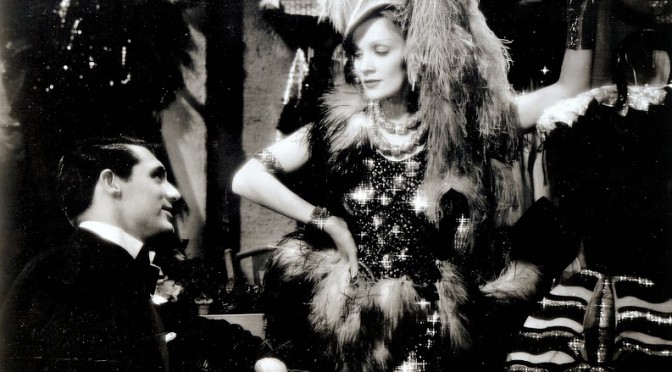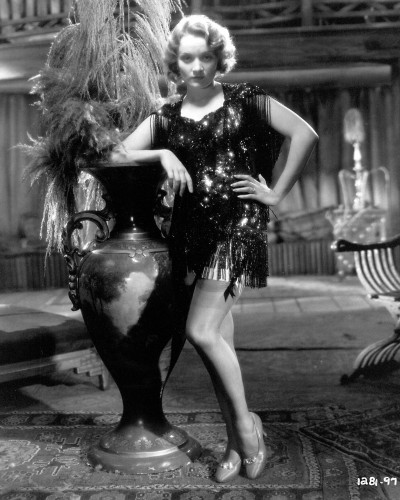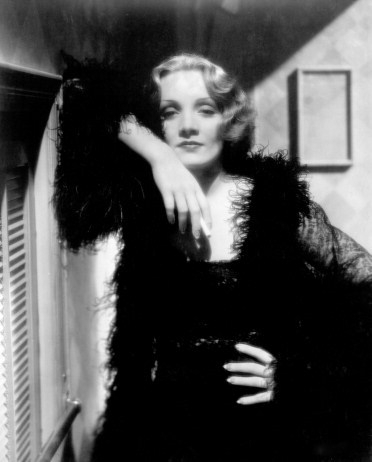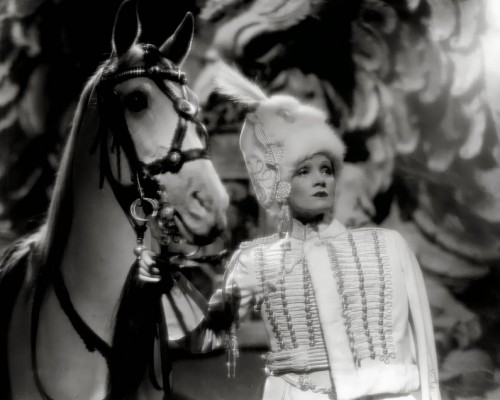The early, pre 1930 days of Travis Banton and his protégé Edith Head are relatively unknown. Banton’s best work came with his costume designs for Marlene Dietrich, Carole Lombard, and Claudette Colbert starting in 1932. Although Edith Head had worked at Paramount since 1923, moving from sketch artist to costume designer, she hadn’t made a name for herself until her designs for Dorothy Lamour’s “sarong” in The Jungle Princess (1936) started a fad. Her start at Paramount has often been told. She taught French at the Hollywood School for Girls, and during her summer break, she answered a job ad for a sketch artist at Paramount. Since she had been teaching French at the school, they thought she could also teach art, so she had previously enrolled at the Chouinard Art Institute. She prepared her portfolio for the interview by rounding up a variety of students’ drawings, watercolors, and oils from Chouinard. Paramount’s head costume designer Howard Greer was impressed by the variety of the art in the portfolio and told her to report to work the next day.[1] But when Head sat in front of her drawing board looking lost, Greer tried to comfort her by saying she would soon get the hang of things.[2] That’s when she confessed about the art in her portfolio not being hers. Greer thought that was funny, and proceeded to teach her how to sketch.
Travis Banton had been designing fashions for couturiere Madame Frances. His first big success with the house was his design for Mary Pickford’s wedding dress to Douglas Fairbanks. General Manager Walter Wanger brought Travis Banton to Paramount to design the costumes for The Dressmaker from Paris (1925), with the studio tagline, “for the first time anywhere the 1926 Paris fashions.”

The Hollywood studios were now competing for the fashion forward looks in their films, and bringing in the best fashion and costume designers to create them. Edith Head became a quick study, learning how to sketch in both Greer’s and Banton’s style of costume illustration. She never quite managed Banton’s ease with feminine figures or stylistic flourishes. One day while working on a sketch, the great star of the silent screen, Jetta Goudal, walked by Head’s drawing board after a fitting and said, “Little sketch girl, never draw anything like that for me.” [3]

At the end of 1927, Howard Greer left Paramount to start his own fashion line, with his salon on Sunset Blvd. in Beverly Hills, decorated by Harold Grieve. Banton replaced Greer as head designer and Edith Head became his assistant. In the days before the stock market crash and the Great Depression, Paramount was producing and releasing over sixty films a year, Greer and Banton had shared the costume designing, but with Greer gone, Banton would now need to have Edith Head design some of the films, or for some of the actors. Clara Bow had become a big star after her huge hit, It in 1927, with its publicity campaign calling her the “It girl.” Banton designed her costumes but found that she resisted his ideas, or modified her look by adding belts and wearing white ankle socks. He soon turned her over to Edith Head to dress.[4]

Many of the stars of the 1920s are mostly unknown today. Besides the stars of the 1930s that got their start in the 20s, Banton and Head designed for 1920s stars Nancy Carroll, Mary Brian, Miriam Seagar, Lilyan Tashman, and future star of RKO’s King Kong (1933), Fay Wray.

Head said she learned much watching Greer and Banton handling the stars, saying no two were handled the same way. She mentioned Nancy Carroll, “an important star.” “I was watching Travis fit her – there was no temper tantrum, no discussion. She took one look at herself in the dress and calmly ripped it off.” [5] Head added to this description that Nancy Carroll wore the dress in the film anyway – another important lesson.

While Head had managed a fair likeness of Banton’s sketch style, especially of the head and general posture, her anatomy was never quite correct when drawing hands and feet. Nevertheless, she did illustrate some of Banton’s own designs as well as sketching for her own designs in the period through 1930. Several costume sketches by Head were changed substantially by Banton for their final screen appearance. This apparently taught Head that modifications made from sketch to screen were usually improvements – a methodology she used throughout her career.
Several of the following sketches were gathered by seamstress Marion Morris who had worked at Paramount. They were later obtained by Gail Donley from whom I gratefully acquired them.

As was typical in the earlier days of the studio system, the studio designers also designed and had the wardrobe departments fabricate gowns for stars to wear on special, publicity-worthy, events. Edith Head had designed a costume for Ruth Chatterton to wear at the masked Fitzmaurice Ball in Beverly Hills, for which she won a first prize. The outfit consisted of a full white taffeta skirt decorated with red velvet roses, with a fitted top with a square cut neckline, mask and hat. It appears that Miss Head designed clothes for herself by the looks of the following sketch, with her signature hairstyle with glasses, the very rough sketch with squiggle hands sure to not impress even a B actress. Yellow polka dot fabric sample attached.

Coming from a different source, I acquired from Yvonne Papp some costume sketches that were also from Paramount in the 1930-1931 period. These lovely sketches were Travis Banton designed and illustrated. One example is shown below, of star Wynne Gibson. The design may be for the film Man of the World, starring William Powell and Carole Lombard, 1931. These costume sketches had been collected by wardrobe mistress Eleanor Shotwell, who had worked with Banton at Paramount, and previously at Warner Bros.

Despite the Stock Market crash of 1929, Paramount kept up a busy schedule of film releases, buoyed by the introduction of talking films and their popularity starting in 1927. The Great Depression did catch up with Paramount, however, and in 1933 it went into receivership, a form of bankruptcy. By then they had a roster of movie stars including Marlene Dietrich, Carole Lombard, Claudette Colbert, Mae West, and Tallulah Bankhead that Travis Banton made glamorous. Male stars including Gary Cooper, Cary Grant and William Powell provided love interests. Edith Head continued through most of the 1930s designing for smaller roles or the “horse operas,” as she called westerns. When Banton’s contract was not renewed at the end of 1938, she was made Paramount’s new head designer, now with sketch artists of her own.
See also: https://silverscreenmodes.com/edith-heads-costume-sketches/
https://silverscreenmodes.com/marlene-dietrich-travis-banton/
[1] Edith Head, The Dress Doctor, Boston: Little, Brown, 1959. 41.
[2] Howard Greer, Designing Male, New York: Putnam’s, 1951. 226.
[3] Head, The Dress Doctor. 44.
[4] David Chierichetti, Edith Head: The Life and Times of Hollywood’s Celebrated Costume Designer. New York: Harper Collins, 2003. 21-22.
[5] Head, The Dress Doctor. 46.
Views: 430









